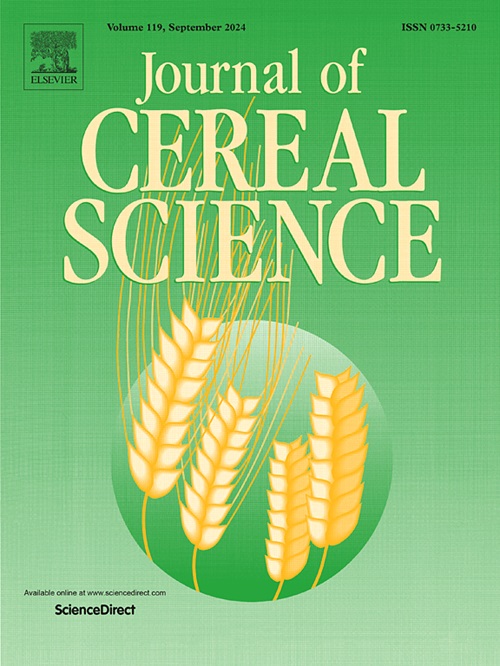Delayed effect of superfine particle size of oat bran on starch retrogradation and hydrolysis of gluten-free rice bread during short-term storage
IF 3.7
2区 农林科学
Q2 FOOD SCIENCE & TECHNOLOGY
引用次数: 0
Abstract
Oat bran addition to rice bread results in quality deterioration especially during storage, but its superfine particle size probably relieves this side effect. This study focuses on the gluten-free and rice starch-based bread. The effects of different particle sizes at medium (MOB, 359.67 μm), fine (FOB, 153.67 μm) and superfine (SOB, 35.77 μm) on the short-term storage quality of rice bread was confirmed. Oat bran addition affected pasting properties of rice flour, leading to a significant decrease in values of final viscosity and setback, which was intensified much more by the smaller particle sizes. The decrease in particle size of oat bran also led to an increase in brightness and whiteness values of rice bread. Gas-holding capacity of rice bread was reduced by MOB and FOB, including specific volume, gas cell diameter and volume, but SOB reversed this reduction and recovered to the same level as control bread. SOB mitigated the increase in bread firmness during storage and led to the highest springiness while the lowest baking loss. The water-binding capacity of rice bread with SOB was much higher than that with MOB and FOB, according to the moisture migration analysis. The inhibition of water evaporation by SOB during storage further delayed the amylopectin retrogradation and starch recrystallization. Additionally, SOB prevented the rice starch hydrolysis, exhibited an increase in RS (35.39 %), which was much higher than those of MOB (23.30 %) and FOB (25.30 %). These findings supported the efficient inhibition of SOB on rice bread staling.
燕麦麸皮超细粒度对无麸米面包短期贮存过程中淀粉降解和水解的延迟效应
在米面包中添加燕麦麸皮会导致质量恶化,尤其是在储存过程中,但它的超细粒度可能减轻了这种副作用。本研究的重点是无麸质面包和大米淀粉面包。研究了中粒(MOB, 359.67 μm)、细粒(FOB, 153.67 μm)和超细粒(SOB, 35.77 μm)对米面包短期贮藏质量的影响。燕麦麸皮的加入影响了米粉的糊化性能,导致米粉的最终粘度和后退度显著降低,粒径越小,这种影响越明显。燕麦麸皮粒度的减小也导致米面包的亮度和白度值的增加。MOB和FOB降低了米面包的储气能力,包括比体积、气室直径和体积,但SOB逆转了这种降低,恢复到与对照面包相同的水平。SOB减缓了面包在储存过程中硬度的增加,并导致最高的弹性和最低的烘焙损失。水分迁移分析表明,添加SOB的米面包的结水能力明显高于添加MOB和FOB的米面包。在贮藏过程中,SOB对水分蒸发的抑制作用进一步延缓了支链淀粉的退化和淀粉的再结晶。此外,SOB抑制了大米淀粉的水解,提高了大米淀粉的水解率(35.39%),远高于MOB(23.30%)和FOB(25.30%)。这些结果支持了SOB对米面包变质的有效抑制。
本文章由计算机程序翻译,如有差异,请以英文原文为准。
求助全文
约1分钟内获得全文
求助全文
来源期刊

Journal of Cereal Science
工程技术-食品科技
CiteScore
7.80
自引率
2.60%
发文量
163
审稿时长
38 days
期刊介绍:
The Journal of Cereal Science was established in 1983 to provide an International forum for the publication of original research papers of high standing covering all aspects of cereal science related to the functional and nutritional quality of cereal grains (true cereals - members of the Poaceae family and starchy pseudocereals - members of the Amaranthaceae, Chenopodiaceae and Polygonaceae families) and their products, in relation to the cereals used. The journal also publishes concise and critical review articles appraising the status and future directions of specific areas of cereal science and short communications that present news of important advances in research. The journal aims at topicality and at providing comprehensive coverage of progress in the field.
 求助内容:
求助内容: 应助结果提醒方式:
应助结果提醒方式:


